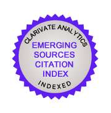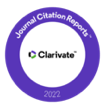The Corredera´s Square in Cordova, a space for society and power in the 16th Century. Contribution of the architect Juan de Ochoa
DOI:
https://doi.org/10.22530/ayc.2023.23.631Keywords:
Corredera's Square, Juan de Ochoa, Urban planning, Humanistic culture, Pared BlancaAbstract
In the last decades of the 16th Century, the city of Cordova reached its moment of greatest artistic and cultural boom during the Modern Age. Most of the urban activity of its inhabitants was concentrated around the municipal nucleus, next to the popular Corredera´s Square, which configured its space -later rebuilt in the following century- thanks to the intervention of important architects, such as Juan de Ochoa, who designed the Jail building and Magistrate´s House and the so-called “Pared Blanca”, used to preside over the main municipal celebrations and events. Through the study of the capitular acts of the Municipal Archive of Cordova it is possible to know the interests of the city government, its zeal for power as representatives of the city, and the patronage of some of its main buildings that marked the development of the institution during the 16th Century.
References
BONET CORREA, Antonio (1978), Morfología y ciudad durante el Antiguo Régimen en España. Barcelona: Gustavo Gili.
GALERA ANDREU, Pedro A. (2011), “Arquitectos y maestros canteros en Andalucía en el Renacimiento”, en RUBIO LAPAZ, Jesús (coord.), Proyecto Andalucía. Tomo 37, pp. 325-366. Sevilla: Publicaciones Comunitarias.
GARCÍA CANO, María Isabel (2003), La Córdoba de Felipe II: gestión financiera de un patrimonio municipal e intervención política de una monarquía supranacional. Vol. 1. Córdoba: Caja de Ahorros y Monte de Piedad.
GARCÍA RAMOS, María Dolores (2006), “Pasado y presente de la Plaza de la Corredera de Córdoba”, en Espacio, tiempo y forma. Serie VII, 18-19, pp. 85-108.
LÓPEZ ONTIVEROS, Antonio y NARANJO RAMÍREZ, José (2011), “Representación simbólica e imagen urbana de la Plaza de la Corredera (Córdoba)”, en Boletín de la Asociación de Geógrafos Españoles, 55, pp. 343-373.
LÓPEZ ONTIVEROS, Antonio y NARANJO RAMÍREZ, José (2011), La Plaza de la Corredera de Córdoba: funciones, significado e imagen a través de los siglos. Córdoba: Servicio de Publicaciones de la Universidad.
LUQUE CARRILLO, Juan (2021), “Nuevos datos para la biografía de Juan de Ochoa, maestro cantero cordobés del Quinientos”, en Accadere. Revista de Historia del Arte, 2, pp. 57-74.
MORALES MARTÍNEZ, Alfredo J. (1996), Hernán Ruiz el Joven. Madrid: Akal.
PUCHOL CABALLERO, María Dolores (1992), Urbanismo del Renacimiento en la ciudad de Córdoba. Córdoba: Excma. Diputación Provincial.
RAMÍREZ DE LAS CASAS-DEZA, Luís María (1948), Anales de la ciudad de Córdoba desde el siglo XIII y año 1236 en que fue conquistada por el Santo Rey D. Fernando hasta el 1850. Córdoba: Tipografía Artística-San Álvaro.
VILLAR MOVELLÁN, Alberto (1996), “Esquemas urbanos de la Córdoba renacentista”, en Laboratorio de Arte, 10, pp. 101-120.
VILLAR MOVELLÁN, Alberto y DABRIO GONZÁLEZ, María Teresa (1992), “Relaciones urbanas del cabildo catedral en la Córdoba del Quinientos”, en Laboratorio de Arte, 5, pp. 163-193.
YLLESCAS ORTIZ, María (1982), “Evolución urbanística de la plaza de la Corredera”, en Axerquía. Revista de estudios cordobeses, 5, pp. 159-176.
YUN CASALILLA, Bartolomé (1980), Crisis de subsistencias y conflictividad social en Córdoba a principios del siglo XVI. Córdoba: Excma. Diputación Provincial.
Downloads
Published
How to Cite
Issue
Section
License
Copyright (c) 2023 ARTE Y CIUDAD. Research Journal

This work is licensed under a Creative Commons Attribution-NonCommercial 4.0 International License.











